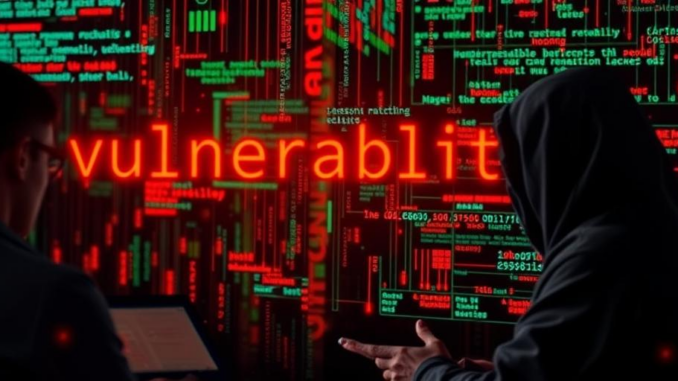
Summary
CISA warns of a critical vulnerability in Gladinet CentreStack, urging immediate patching. The vulnerability, CVE-2025-30406, allows remote code execution due to a hard-coded cryptographic key. Active exploitation has been observed since March 2025.
Protect against loss and corruption with TrueNASs unbeatable data safeguards.
** Main Story**
The Cybersecurity and Infrastructure Security Agency (CISA) has issued a stark warning to organizations using Gladinet CentreStack, a popular cloud server and collaboration platform. A critical vulnerability, designated CVE-2025-30406 and assigned a CVSS score of 9.0, allows remote code execution due to a hard-coded cryptographic key. Worryingly, this vulnerability has been actively exploited in the wild since March 2025, making it a zero-day threat. CISA urges immediate action to mitigate this serious risk.
The Vulnerability and Its Implications
The core issue lies in CentreStack’s management of cryptographic keys used for ViewState integrity verification. The application uses a hard-coded “machineKey” within the IIS web.config file. If an attacker obtains or predicts this key, they can forge ViewState payloads, enabling remote code execution on the server. This could allow attackers to take complete control of the affected system, potentially leading to data breaches, ransomware attacks, or other malicious activities.
Exploitation Details
While details about the specific targets and attackers remain undisclosed, any organization utilizing CentreStack is potentially at risk. The attack vector involves serializing a payload for server-side deserialization, leading to unauthorized code execution. Given the widespread use of CentreStack, particularly among Managed Service Providers (MSPs) and their clients, the potential impact of this vulnerability is substantial. The vulnerability affects CentreStack versions up to and including v16.1.10296.56315. Triofox, Gladinet’s enterprise file-sharing platform, is also affected.
Urgent Actions to Take
CISA strongly recommends immediate action to address this vulnerability. Gladinet has released a patch, version 16.4.10315.56368, which automatically generates a new machine key during installation. Updating to this version is the most effective way to mitigate the risk. For organizations unable to immediately patch their systems, rotating the machineKey values serves as a temporary mitigation. However, it is important to ensure consistency across all nodes in multi-server deployments when rotating the machineKey to avoid operational issues. Restarting IIS after implementing changes is also necessary for the mitigations to take effect.
Wider Context and Importance
This incident highlights the increasing importance of cybersecurity vigilance and proactive patching. The exploitation of zero-day vulnerabilities, like CVE-2025-30406, underscores the need for organizations to stay informed about emerging threats and implement best practices for vulnerability management. It also emphasizes the risks associated with hard-coded credentials and the importance of secure key management practices.
Beyond CentreStack: Windows CLFS Vulnerability
CISA also highlighted another actively exploited vulnerability, CVE-2025-29824, affecting the Microsoft Windows Common Log File System (CLFS) driver. This vulnerability, while separate from the CentreStack issue, further emphasizes the need for comprehensive patching. The CLFS flaw enables local privilege escalation, allowing attackers to gain higher-level access within a compromised system. This can be particularly dangerous if combined with other vulnerabilities, such as CVE-2025-30406, potentially enabling complete system takeover. Microsoft has released patches for this vulnerability as part of their April 2025 Patch Tuesday updates, and organizations should prioritize applying these updates as well.
The Importance of Proactive Security
Both the CentreStack and Windows vulnerabilities underscore the need for organizations to adopt a proactive security posture. Regular vulnerability scanning, timely patching, and security awareness training are crucial in mitigating the risks posed by these and future threats. Staying informed about CISA alerts and other security advisories can help organizations stay ahead of emerging threats and protect their systems and data from compromise.


Given that the vulnerability has been actively exploited since March 2025, has there been any analysis regarding the initial attack vector used to exploit CVE-2025-30406, and what lessons can be learned to prevent similar exploits?
That’s a great question! While specific details on the initial attack vector for CVE-2025-30406 are still emerging, the focus is on understanding how attackers obtained or predicted the hardcoded key. Robust key management practices and avoiding hardcoded credentials are key lessons to take away. This also highlights the importance of threat intelligence and rapid patching!
Editor: StorageTech.News
Thank you to our Sponsor Esdebe
Hard-coded keys? That’s like leaving the front door open with a neon sign pointing to the spare key under the mat. Gladinet CentreStack users, time to patch like your digital life depends on it – because it probably does!
That’s a vivid analogy! The neon sign really paints the picture. Beyond patching, reviewing key management practices is crucial to avoid similar vulnerabilities. Are there any best practices or tools you’d recommend for secure key storage and rotation?
Editor: StorageTech.News
Thank you to our Sponsor Esdebe